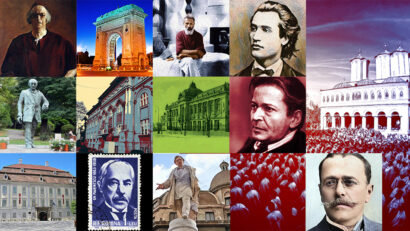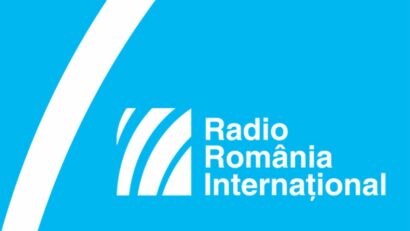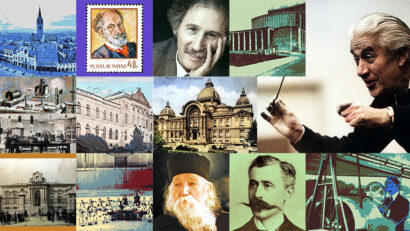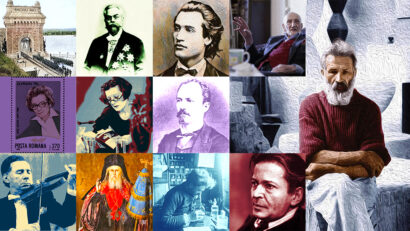Gold Mining in the Romanian Space
Gold has been mined in the Romanian space continuously since the Neolithic era. In addition to salt and petroleum, gold was a valuable resource for locals, but also attracted invaders.
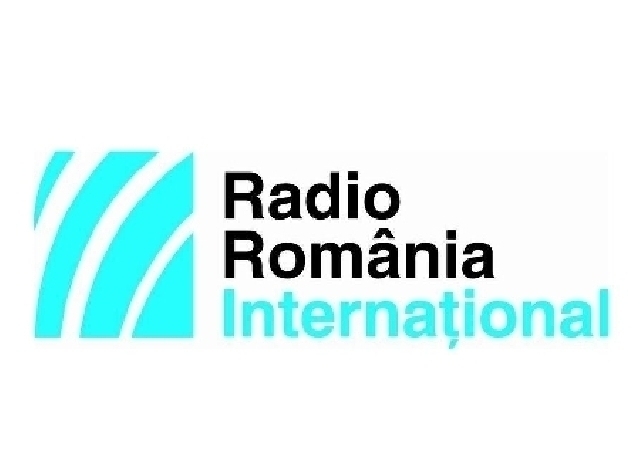
Christine Leșcu, 03.03.2018, 14:30
Gold has been mined in the Romanian space continuously since the Neolithic era. In addition to salt and petroleum, gold was a valuable resource for locals, but also attracted invaders. The first were the Romans, who, after conquering Dacia in 106 CE, started to organize gold mining in what is now Transylvania. Up to that point, gold mining had been rudimentary. The Dacians were gold panning in the multitude of rivers that crossed the Carpathian Mountains.
Radu Lungu, who authored the book titled “Gold in Romania”, published by Paideia, has more: “Right away, Emperor Trajan started organizing Dacia Felix, especially in the region of the Apuseni Mountains, where most of the gold resources were. The XIII Gemina Legion was quartered in Apulum, what is today Alba-Iulia, for military control of the region. A procurator, Roman local administrator, was appointed in Ampelum, what is today Zlatna. He was in charge of gold mines in particular. The Romans did not just harvest gold on the surface, or shallow gold, but went deep, digging as deep as 300 meters. Shallow gold was mined in round wells a few meters in diameter.”
The most important gold mining area worked by the Romans was in the so-called Apuseni rectangle, between the rivers Aries, Crisul Alb, and Mures. The most important Roman mines were in the Rosia Montana — Zlatna — Bucium area. Later, the area of interest moved to the southwest, mostly in what is now the Banat — Oltenia and Danube gorge area, what is now the county of Caras-Severin. Most of the gold and silver mined in the Apuseni area went to Rome.
After the withdrawal of Roman administration, decided in 271, the gold mines went into dereliction, according to Radu Lungu: “In the age of migrations, for about 1,000 years, the only way to mine gold was by panning the silt brought down from the mountains by rivers. The Hungarian kingdom made some progress, but true development started after 1700, when Transylvania became a part of the Habsburg Empire. New mines were opened, but also old ones were refurbished. The area of interest moved to the Abrud — Zlatna — Rosia Montana area, a region encompassed by Valea Ampoiului, Valea Crisului Repede and Valea Muresului.”
During the time when Transylvania was a part of the Austro-Hungarian Empire, gold mining underwent industrialization and modernization, especially since labor was plentiful. Here is Radu Lungu with details: “There were lots of miners there, German in origin, from Silesia and Slovakia. There were also plenty of domestic miners. In the Habsburg era, there were fiscal mines, private mines, large and medium sized, as well as small businesses, some owned even by free peasants or serfs. The serfs could only hold the mines as a concession, having only the right to the exploits.”
We asked Radu Lungu how much gold is estimated to have been extracted along the centuries, in Roman times, Habsburg times, and communist times: “It is estimated that so far about 2,200 tons of gold have been extracted, about 700,000 kg during Roman times, about 500,000 kg between the 4th and the 16th century, and about 200,000 kg during communist times. As you can see, in this latest period of time, the quantity dropped significantly compared to Habsburg times, though the amounts were still impressive.”
At present, Rosia Montana, where the old Roman gold mine Alburnus Maior can still be visited, has been designated by the Ministry of Culture as a historic site, which put a stop to gold mining there. This decision was made following a lengthy conflict related to a contract of gold mining concession with a foreign company.

